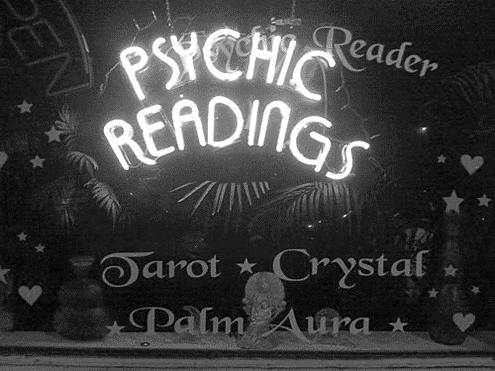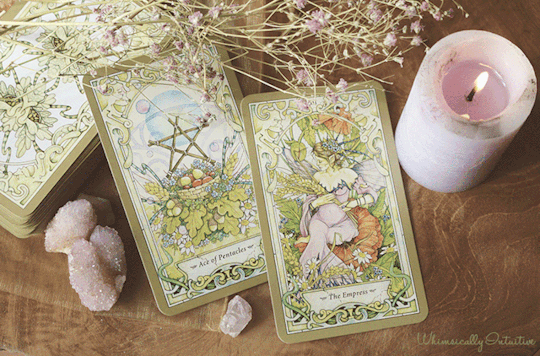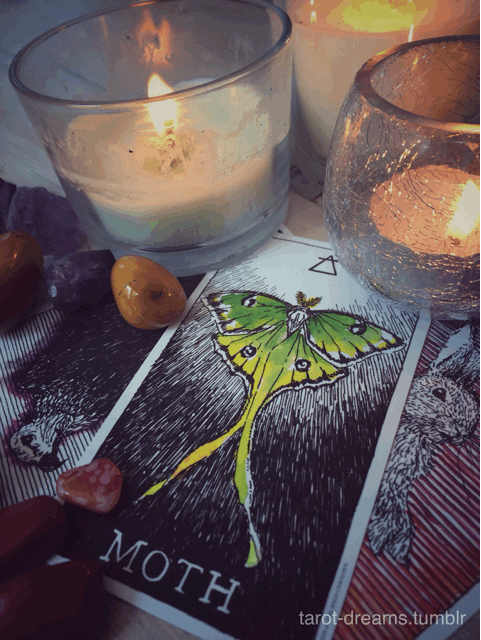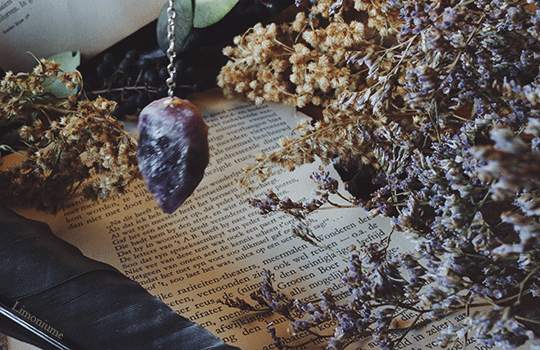#they LOOK at you and infer how the basic archetypes of each card can be related to your life
Explore tagged Tumblr posts
Text
got my fortune read again and listen, i legit DO NOT believe in it at all but it continues to shock me how each time i get my tarot read by either my friends (which, to be fair, there's a bias there) or professionals i end up getting the same results and the same message. the worst part is i don't even tell whoever is reading my cards that "oh, yeah that one fortune teller told me the same thing." these mfers literally pull cards out of nowhere and the combinations can all be different, yet the message stays the same. the deck and the method of fortune telling could even be different, but i just keep getting the same damn message and the same damn results...
that to me is so... it's testing my eDgY intp-t fr
but also ngl it's nice to know that the universe is on my side <3333
#ujutxt#now hear me out#i ALSO don't believe in the mbti or the enneagram#the thing is with tests like the mbti and the enneagram if you take them one too many times you can rig the system#like say i wanted enfp#i can literally just answer the way an enfp would if that makes sense#the answer combinations are so obvious#but tarot#that shit baFFLES ME#IN BOTH GOOD AND BAD WAYS#like in one way the cards themselves are so bs but in another way#the readers are basically psychoanalysts#they LOOK at you and infer how the basic archetypes of each card can be related to your life#it's also so#interesting?#to see how much improv skills you need to read a super random deck adn go “hmm yeah you have a bit of a wobbly path here in aroudn 2025”#then proceeds to explain how the hermit and the knight of swords together means i'm spreading myself too thin#like ???#that takes SKILL#even MORE skill when you're doing it to someone you've literally just met
1 note
·
View note
Text
Divination Basics

From the Roman priest reading auguries to interpret the will of the gods to the modern fortune teller reading with a deck of playing cards, divination has been a part of human spirituality for thousands of years. Today, divination is an important part of many witches’ practices, and can be an important tool for self-reflection and analysis.
Merriam-Webster defines divination as, “the art or practice that seeks to foresee or foretell future events or discover hidden knowledge usually by the interpretation of omens or by the aid of supernatural powers.” Divination can be used for many things, not just to predict the future. It can be used to understand the past, identify patterns at work in your present, or as a tool for working through trauma.
In the book You Are Magical, author Tess Whitehurst describes divination as, “a way of bypassing your linear, thinking mind and accessing the current of divine wisdom and your own inner knowing.” As I’ve discussed in a previous post, all of us are receiving psychic information all the time, though many of us don’t realize it. Divination tools like tarot cards or rune stones act as triggers to help kickstart our natural psychic gifts.
Divination relies on the use of our intuition. Intuition is defined my Merriam-Webster as, “the power or faculty of attaining to direct knowledge or cognition without evident rational thought and inference.” These are the things you know without needing to be told. Another way of thinking of it is this: your intuition is the way you interpret the information you receive through your psychic senses.
The most important thing to remember when doing divination is that the tool you are using isn’t giving you information — it’s simply helping you to access information you already know. The revelations come from you, not from the cards or whatever other tool you may be using.
When using divination to foresee the future, it’s important to remember that the future is never set in stone. These tools can only show you the most likely outcome based on your current direction.
Beginner-Friendly Divination Tools
These are the divination methods I would recommend for beginners. For one thing, most of these systems are fairly easy to learn and use. For another, these are some of the most popular divination methods among modern witches, so it’s easy to find information about them and/or talk to other practitioners about their experience.
As you’ll see, each divination method has its own strengths and weaknesses, so you may choose to learn several methods that you can combine to get stronger readings. Or you may find that you can get all the information you need from a single method, which is also okay.

Tarot. This is my personal favorite divination method, but it’s also the one with the most misconceptions surrounding it. Tarot cards do not open a portal to the spirit world, and they probably didn’t originate in Ancient Egypt. In fact, evidence suggests that the tarot comes from a medieval Italian card game called Tarocchi, although the modern tarot deck as we know it didn’t come around until the 20th century. Tarot cards are not any more or less supernatural than ordinary playing cards. (Which, incidentally, can also be used for divination.)
Tarot makes use of archetypes, and many readers interpret the cards as a map of an archetypal spiritual journey. For this reason, tarot cards are especially useful for identifying the underlying patterns and hidden influences in any given situation.
Most tarot decks follow the same set of basic symbolism. Unfortunately, this does mean that new readers will need to study the accepted meanings. This isn’t to say that your readings will always match up 100% with the standard meanings of the cards — you may receive intuitive messages that deviate from tradition. Still, it’s helpful to know a little of the history and traditional symbolism behind this powerful divination tool. The good news is that, since most decks use similar symbolism, once you learn the traditional meanings you can successfully read with almost any tarot deck.
I’m planning to post a more in-depth introduction to tarot very soon, but in the meantime, if you want to learn this divination method I recommend starting with the book Tarot For Beginners by Lisa Chamberlain and/or with the website Biddy Tarot.

Oracle Cards. Oracle cards have been rapidly gaining popularity in the witchcraft and New Age communities in the last few years, and it’s easy to see why. One major appeal of oracle cards is how diverse they are — there are countless different oracle decks out there, each with its own theme and symbolism. Another big plus is how beginner-friendly they are; Oracle cards are usually read intuitively, so most decks won’t require you to learn a complex system of symbolism. (Of course, the fact that every oracle deck uses different symbolism can be frustrating for some readers, because they have to learn a new set of symbols for every deck.)
Some readers (myself included) also find that oracle cards usually give more surface level information. Tess Whitehurst says that, “While oracle cards can help us answer the questions ‘What direction should I take?’ and ‘What is the lesson here?’ tarot cards are more suited to helping us answer the questions ‘What is going on?’ and ‘What is the underlying pattern at work here?'” For this reason, many readers choose to use tarot and oracle cards together to get a more well-rounded look at the situation.
Another common complaint about oracle cards is that many decks are overwhelmingly positive and shy away from dark themes or imagery, which creates an imbalanced reading experience. I think this is best summed up by one Amazon review for the Work Your Light Oracle, which says: “Basically, this is very much a deck for Nice White Ladies(TM) who like crystals and candles but aren’t ‘super into all that witchy stuff.'”
There ARE oracle decks out there that address darker themes, but many of the most popular decks on the market are overwhelmingly positive. That’s not necessarily a bad thing. Sometimes a little positive encouragement is more helpful than brutal honesty. However, too much focus on the positive can lead you to ignore your problems, which only makes things worse in the long run. For this reason, finding balanced decks is important — if you’re going to use a very shiny happy deck, my advice would be to alternate it with more grounded decks, or with a deck specifically designed for shadow work.
That being said, oracle cards are a great divination tool if you can find a good deck, especially for beginners who are intimidated by more structured systems like tarot and the runes. If you’re interested in working with oracle cards, the best way to start is to find a deck that 1.) you feel a strong attraction to, and 2.) has a good guidebook. (My favorite oracle deck is the Halloween Oracle by Stacey Demarco, which I use for readings all year.)

Runes. The Elder Futhark alphabet is a runic alphabet that originated in ancient Scandinavia around 200 AD. While this was an actual writing system, it also had magical and mythological associations in the cultures that originally used it. While using the runes for divination is a modern practice, it is based on the historical sense of magic surrounding these symbols.
Like tarot, the runes have a traditional set of meanings. However, because there are only twenty-four runes, there aren’t as many meanings to learn as there are with tarot. Some rune sets also contain a blank stone, which has its own special meaning. I have personally found the runes to be a great source of wisdom and insight, although they do tend towards “big picture” messages rather than small details.
However, there is one major stain on the runes’ history; they were studied and used by Nazi occultists before and during World War II. Like many symbols associated with historical Germanic paganism, the runes were appropriated as part of Nazi propaganda — for example, the Sowilo rune was incorporated into the SS logo. This isn’t to say that you can’t reclaim the Elder Futhark alphabet, but I do think it’s important to know the history going in. Because of their association with Nazism, it’s best to avoid wearing or publicly displaying the runes.
There are other ancient alphabets that are used for divination, like the Anglo-Saxon runes or the Irish Ogham, but the Elder Futhark is the most popular.
If you’re interested in learning divination with runes, I recommend the book Pagan Portals: Runes by Kylie Holmes.

Pendulums. Pendulums are interesting because, unlike tarot, oracle cards, and runes, they can be used to answer yes or no questions. For this reason, many readers use pendulums to get clarification on readings they’ve done with other divination methods, but you can also use pendulums on their own.
A pendulum is any small, weighted object hanging from a chain or string. You can buy a pendulum made specifically for divination from a metaphysical shop or an Etsy seller, but you can just as easily use something you already have: a necklace, your housekey, or a small rock or crystal tied to a string.
Pendulums may be the easiest divination method to learn. The only thing you need to do to learn how to interpret a pendulum is ask it what its “yes” and “no” motions look like. To do this, simply hold your pendulum in your hands and focus on your connection to it. Then, let the pendulum hang from its chain or string so it can swing freely. Say or think, “Show me ‘yes’.” Allow the pendulum to swing, and pay attention to its movements. “Yes” is often a forwards-and-backwards swing or a clockwise circle, but your “yes” may look different. (Some witches even notice that different pendulums in their collection have different “yes” and “no” movements!) Once you’ve gotten the pendulum to show you its “yes,” ask it to show you its “no.” For many readers, “no” is a side-to-side swing or a counterclockwise circle, but again, yours may be different.
The biggest downside to pendulums is that because they typically only answer “yes” or “no,” you have to be very specific with your questions. Pendulums aren’t the best tool for general energy readings or open-ended advice. However, that specificity makes them great for validating your gut feelings, interpreting your dreams, identifying a deity or spirit that you think may be reaching out to you, or any other situation that requires a little clarification.
#baby witch bootcamp#long post#baby witch#witch#witchcraft#witchblr#divination#divination witch#tarot#tarot cards#tarot meme#oracle cards#runes#runestones#elder futhark#pendulum#fortune teller#psychic#intuition#intuitive#pagan#pagan witch#christian witch#heathen#norse paganism#my writing#mine
2K notes
·
View notes
Note
what is the most underrated ship, in your opinion?what is the most overrated ship, in your opinion?
Thank you so much for giving me one of these!!!
Hmmm… I guess my answer would depend on the fandom.
Most Underrated Ship:
Possibly Sakura Kyouko/Miki Sayaka from Puella Magi Madoka Magica. My attitude on how and why I actually ship teenagers (unless discussing those last couple of years) has changed and, I hope, matured since a few years ago. I’m still just haunted and want them to survive and be happy together. However PG I want my consumption of it to be, I want them to hold hands, to kiss, to fight together and for each other, and to love each other passionately.

It’s underrated because the fandom seems to rank these two characters the lowest, especially Sayaka, from what I have been able to tell. If they do like either of them, they want to ship Kyouko with Mami and still don’t like Sayaka.
I understand feeling frustration about and for Sayaka, but I don’t quite get the vitriol that I remember being behind it in the fandom. It was like “oh she’s so stupid and pure and idealistic and look what it gets her she fails more horribly than everyone else” and it’s like… they missed… that that was the point.
Puella Magi Madoka Magica is a grimdark reinterpretation of the magical girl genre. You can critique the motive and execution of that all you like, but if you like PMMM then I don’t understand why you would have such an unfavorable opinion of Sayaka. I forget where I read it, so I can’t source it, but basically the five core girls in PMMM are a sentai group / Five Man (Girl) Band even though the primary story-line and timeline of the series have them all pretty fractured and at odds. Because of the natural of Homura’s ability and what she had done, it was basically to be inferred that they started out as a magical girl group who worked together primarily but that it got further and further out of control. It’s also textual that Homura did try to protect Sayaka too, at first, but that she came to the conclusion that no matter what she did or what happened, Sayaka would fall. She could affect change on a lot of other things, but Sayaka was always going to become a witch.
And basically, that’s because Sayaka is the “Protagonist of a Magical Girl Anime” archetype. She wants to be a superhero. She’s got soft feelings, but she’s tough and a bit awkward on the outside. She’s middle class and typical. Her parents love her but from afar such that they only notice something is wrong after her death. She doesn’t have a lot of things, but she also does have a lot of things. She has the typical Superheroic Revelation that it’s impossible to have the Normal Thing you wanted if you choose to be a superhero to protect it, and so on. I don’t understand why this is treated like it’s so stupid and repugnant except that it’s the way Homura has come to view it that way. And Homura is deeply damaged. She isn’t right about everything. Again, it’s the point.
And then there’s the contingent that are like “Well they don’t get along well in the main story timeline, so therefore they aren’t friends let alone attracted to each other.” See my above for what is actually supposed to be inferred from the timeline and iteration of those few weeks that we see in the anime. Then look at how it’s contrasted in Rebellion and in the scene above-referenced form the gif I borrowed. Sayaka and Kyouko are oil and water in some ways, but they love each other. They are so violent and angry in the anime’s timeline because they are opposites, yes, and both have come to vastly different conclusions, but we know for a fact that it doesn’t have to be that way. We know that Homura kind of tries to ally herself with Kyouko because she is a wild card. While Sayaka is utterly predictable, Kyouko isn’t. Sometimes, she’s right there in the thick of it. Other times, she doesn’t eve bother showing up. There’s a reason Homura finds Kyouko surprising and keeps an eye on her. She can’t predict her. This difference is exactly what makes Kyouko fit her “Lancer” archetype. In the sentai idealistic five girl band anime we missed getting in this show, she would have been her best friend or more.
So yeah. I get why you might prefer Homura and Madoka, but I don’t get why the general opinion is often a scale of “hate it it’s terrible” to “eh don’t care.”
Most Overrated Ship:
I’m gonna change this to the most overrated ship that I also ship because I don’t see any reason this prompt should be super negative. It also makes it easier for me to answer. It’s Olicity.
I love Olicity. I promise and I swear.

Like look at them. I love them and this moment. Completely. However, I don’t like it when it seems like there’s a fandom thing where you either like Olicity to the exclusion of everything else or if you like anything else it’s somehow suspicious if you like Olicity. The divide over this bothers me so much when if you look at the better-70% (at minimum) of the writing, there is no way and no reason that Oliver and Felicity would put their own truly selfish motives over the good of anyone else (except, you know, truly evil people). They bond through multiple trials of fire, and they don’t just take the easy ways out to stay together. They only ended up back together because they stuck it out and kept doing what they needed to do until finally, finally it was the right time. So basically, I view it as this weird thing where it’s overrated in the sense that it’s often seen as this seamless, no-doubt-ever-about-it candy and vanilla ship when it definitely had its snarls, both in canon and on meta levels.
But I still love Olicity and I will fight anyone for them in reasonable critical arguments.
1 note
·
View note
Text
So, what do you actually do as an agnostic secular witch?
(here’s and draft of expert from the zine I’m working on about my personal practice of witchcraft)
I’ve joked that my personal practice of witchcraft looks like a cottage or hearth witch got set loose in a punk house of a Philosophy major drop-out who read too many Discworld books.
However, that statement doesn’t mean much to you if you don’t know what a cottage or hearth witch is, some aspects of Philosophy, or the glory of Terry Pratchett’s Discworld witches’ concept of “headology”.
A lot of what I do falls into the category of hearth witch or cottage witchcraft, a style of witchcraft that focuses on the home. This includes making the home a refuge; a safe place. I do a lot of work with protection, prosperity, and just fostering a space for creativity, comfort, and safety to all that enter my home.
Some of the things I do include setting wards and boundaries in my home and property, growing herbs and plants to be used in magical workings, candle spells, building charms, making jar spells, kitchen witchery in cooking and eating food to aid in a desired outcome. I use tarot cards and other aspects of divination not so much to tell the future, but as a tool for decision making or to spot things I should pay more attention. However, I do all of this through my own filter of experiences as a vegan DIY punk. This means making magic through trial and error or building charms from things I find in free boxes, or even weeds and trash I find on the street.
I draw a lot from folk magic traditions using herbs and stones and symbols through sympathetic magic, which is concept coined by James George Frazier in the Golden Bough (1889) to describe existing magical workings he observed that operate based on correspondences or imitations to gain specific outcomes: like produces or attracts like. This could be something like using the shape of a heart to represent a heart, or creating poppets to represent yourself, or certain colors like green in plants to represent growth or prosperity. A lot of magical correspondences are based on this: What does a plant look like? How does it grow? Does it have medicinal properties? If so, what?
I draw from my Philosophy background and that mixes with folk magic in ways that I use Jungian archetypes in a similar way as correspondences to represent personal things that correspond to universals, which is pretty much a thread that I feel has run through all my zines, actually: making specifics correspond to universals.
I’ve always been a sucker for patterns and Jungian Synchronicity, which is the experience of two or more causally related things or things that are unlikely to occur by chance, yet are experienced occurring together in a meaningful way. Basically stating that you draw the conclusion, it’s not “the universe trying to tell you something”, but rather you inferring something from the experience that is meaningful to you. So when you see 11:11 on the clock, or cars that are the same as yours after you buy one, or when your phone rings and it was your friend you were about to call. The meanings are subjective and you get to decipher the significance and find your own value in the experience.
Another aspect of my practice is what I like to call “soft animism”. Animism being the idea that all things from plants, animals, rocks, natural phenomenon, or even places have a soul. I wouldn’t go so far as things having souls (as I’m a bit iffy on the idea of the soul to begin with), but I do like the Aristotelian concept of essence. The idea that each thing has a thing that makes it uniquely that thing, which is incredibly vague, I know, but that’s just how I think about. Collecting these things, and sometimes asking these things if they wanna come along for an adventure, to aid you in a task helps nudge that task along to your desired outcome.
One of the final aspects of my witchcraft practice is chaos magic. Which, when I try to explain, just looks like a pile of mashed potatoes, just sort of sitting there all amorphous and abstract. I mentioned this problem online but people just confirmed that yes, chaos magic does indeed look just like a pile of mashed potatoes, and then suggested I write a zine about potato magic. Chaotes, what some folks who practice chaos magic call themselves, are great! They can be goofy and at the same time way too serious, but they get shit done. I revere them as I revere buddhists, but neither of those paths could ever be completely me. It’s kind of a strange comparison, sorry, but it seems to make sense in my head.
Chaos magic is something I feel I understand intuitively, like how I understand punk, which is another concept I have a hard time pinning down to a definition. Chaos magic is another highly unique individualized practice with no core set of rules. Chaos magic uses the concept of belief more as a tool than an obligation. Belief is not objective. Belief is an active and malleable force and not a “thing we have faith in” when it comes to creating outcomes. All things are possible, some things are more possible than others. Magic is like the lottery, some things increase your chances from 1 in a million to 1 in 10,000. There are patterns and we can alter those patterns to manifest things. Chaos magic is pragmatic in its use of belief and that belief is flexible. When discussing chaos magic the idea of “paradigm shifting” is often mentioned. Paradigms, as well as beliefs, are modes of thinking and perceiving and these things are malleable in chaos magic.
The way this manifests in my practice is synthesized by my study in other areas of witchcraft through different techniques and structures. To see the structure, to break it down to component parts and build it back up into something that works for me. I talk of spell building, not casting. Some spells are built over years or in seconds and released into the world to nudge things in my favor. I could work with some of the techniques I discussed above or drop those into techno-witchcraft, plant based magic, pop culture magic, personal correspondences, or making shit up with garbage I found on the street. Chaos magic gives me the ability to move between systems or to smash them together. It allows me to work in the absurd, because it is my absurd.
“Headology”, is a sort of psychology as practiced by the fictional Ramtops witches from Terry Pratchett's Discworld books. It sort of dovetails into that idea of belief as a tool. Our perceptions create our reality. What people believe is what is real to them. This makes subjective believe an important tool in witchcraft.
With all that in mind, I really do love the classic witch aesthetic. The wise women that lives in the cottage in the woods with a garden of poisonous plants. I love the earthy look and feel of raw wood and chests filled with artifacts. Trinket boxes and charms and candles dripping wax. I love smoke billowing from an incense burner and shelves filled with jars of dried herbs and oils. I love altars and shrines made ready for magical working covered in crystals. I’ve also gotten into dark mori fashion which is sort of dark layered clothing that leads into that aesthetic. I love it so much, I’ve always loved it but now I’ve found a way to bring it all together, luckily by mostly shopping at thrift stores.
Does the aesthetic really aid in my magic? sort of. It’s part of that soft animism thing where I surround myself with things that wanted to come along for the adventure and make me feel I can accomplish the goals I set. In my practice, I set the values of what is important and what is not. Or maybe I just like acorns, and candles, and jars filled with things, so what?
853 notes
·
View notes